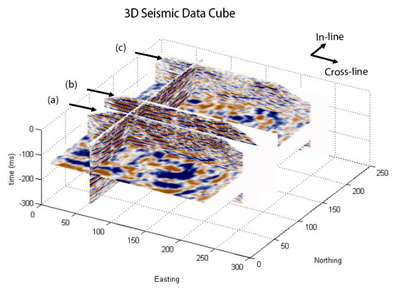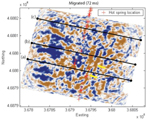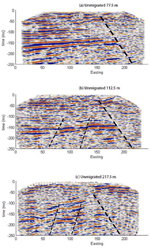Principal Investigator: John Bradford (BSU)
A seismic reflection profile across the entire basin (11 km) just south of Borax Lake, along
Powerline Road, provides a large-scale interpretation of structural geometry used to aid additional studies conducted at a
higher resolution in the immediate vicinity of thermal springs north of Borax Lake.
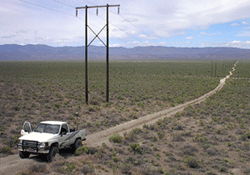 Looking northeast across the basin along Powerline Road.
Looking northeast across the basin along Powerline Road.--Photo by T. Jones |
Results of the 2-D basin-scale study reveal the presence of shallow bedrock near the center of the basin and verify that a fault zone is present beneath the Borax Lake hot springs area.
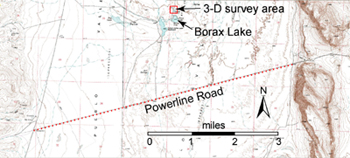 Location map for the Borax Lake area showing the 2-D seismic transect along Powerline Road and the 3-D survey area.
Location map for the Borax Lake area showing the 2-D seismic transect along Powerline Road and the 3-D survey area. |

[Click image to enlarge]
Seismic reflection profile showing a complex normal fault zone believed to
control hot springs formation north of Borax Lake.
|
